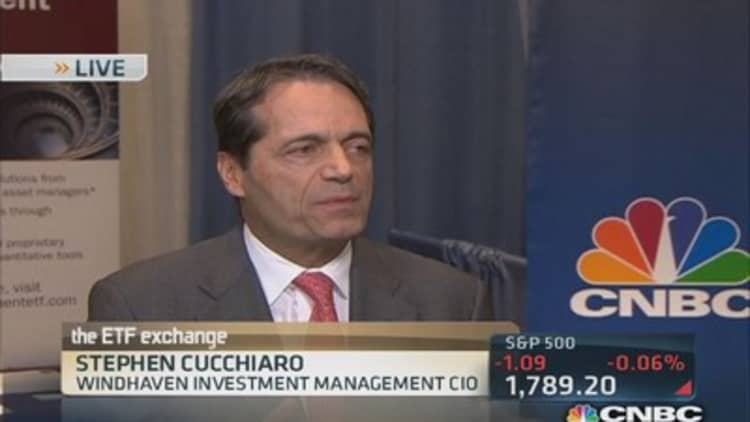Investors hoping hands-on management will boost their returns may be disappointed as more asset allocators are eschewing active funds for their passive, index-tracking cousins.
"There are certain asset classes where it's very difficult to find alpha," said Meike Bliebenicht, a product specialist responsible for the HSBC World Selection global multi-asset portfolios at HSBC Global Asset Management.
(Read more: ETFs woo Mrs. Watanabe with foreign stocks)
In asset classes with high correlations, such as U.S. equities, "it's very, very hard to actually pick stocks which will be outperforming and there we've simply said it's not really worth holding active managers or just investing with active managers," she said. "We have substantial part of our U.S. equities exposure in index trackers."
The paucity of active managers who actually manage to create value is an often-cited reason for preferring passive index-tracking funds.

(Read more: Hedge funds sit out the emerging market turmoil)
Around 60-69 percent of active fund managers for U.S. stocks underperformed their benchmark indexes over the 12 months to mid-2013, with the result equally bad over three- and five-year horizons, according to the Standard & Poor's Indices Versus Active Funds Scorecard, or Spiva.
Over the previous five years, around 63 percent of global funds, 66 percent of international funds and 75 percent of emerging market funds got beaten by their benchmark indexes, according to the Spiva results.
(Read more: What do fund managers do with unpopular asset classes?)
"You need really a good fund manager picker to highlight which asset managers will outperform. So that is why the tracker business is gaining momentum," said Alain Bokobza, head of global asset allocation at Societe Generale, in December. "The trend is toward active, multi-asset management into passive funds," he added.
Keeping costs low is another factor in deciding to allocate toward index-tracking funds. Actively managed funds typically charge fees of 1 to 2 percent, while the fee for the SPDR S&P 500 ETF (SPY), which tracks the S&P 500, is 0.09 percent.
(Read more: Top trends in mutual fund investing)
"We always look at costs of the actual vehicle and if we don't have a particular preference then we use the ETF or an index tracker. The key point is that it tracks the index well and that it's cheap," Bliebenicht said.
Index mutual funds based in the U.S. had around $1.3 trillion in assets at the end of 2012, compared with around $13 trillion in the U.S. mutual fund market as a whole, according to data from the Investment Company Institute. Around 33 percent of the index fund assets were in S&P 500 mutual funds, the data show.
Assets under management in ETFs in the U.S. grew to around $1.33 trillion at the end of 2012 from around $83 billion at the end of 2001, the data show.
Not everyone is convinced that the trend toward index funds is positive.
"We think the systemic risk and the risk of a significant gap down in markets is significantly increased because most people are getting exposure via ETFs," said Ed Rogers, CEO of Rogers Investment Advisors. "When the long-only bull market seems to come to an end, all these ETF buyers will just say 'see you tomorrow,'" he said.
(Read more: 4 signs of a potential ETF apocalypse now)
"It will be just like the program trading crash in 1987," Rogers added. "All those market heavy stocks will gap down."
He believes the market gains over the last five years have been driven by government support and that is starting to come to an end. "It becomes much more of a stock pickers environment," Rogers said.
—By CNBC.Com's Leslie Shaffer; Follow her on Twitter @LeslieShaffer1

